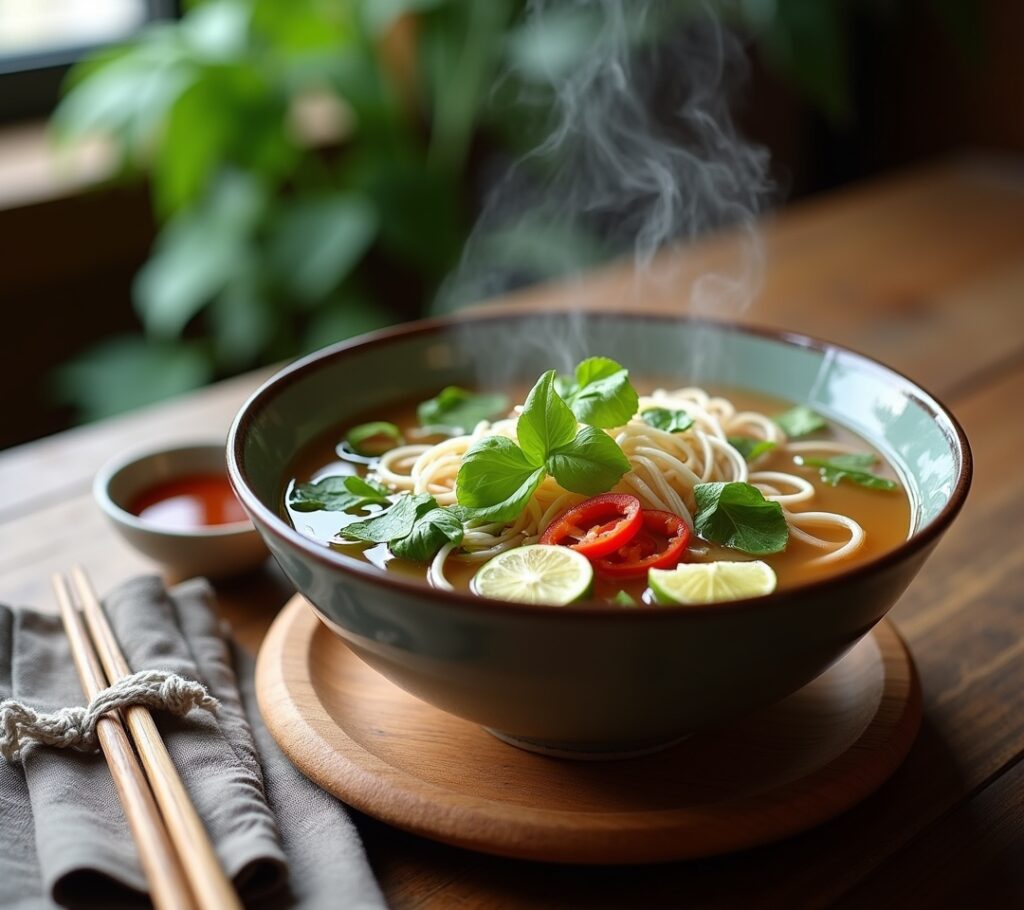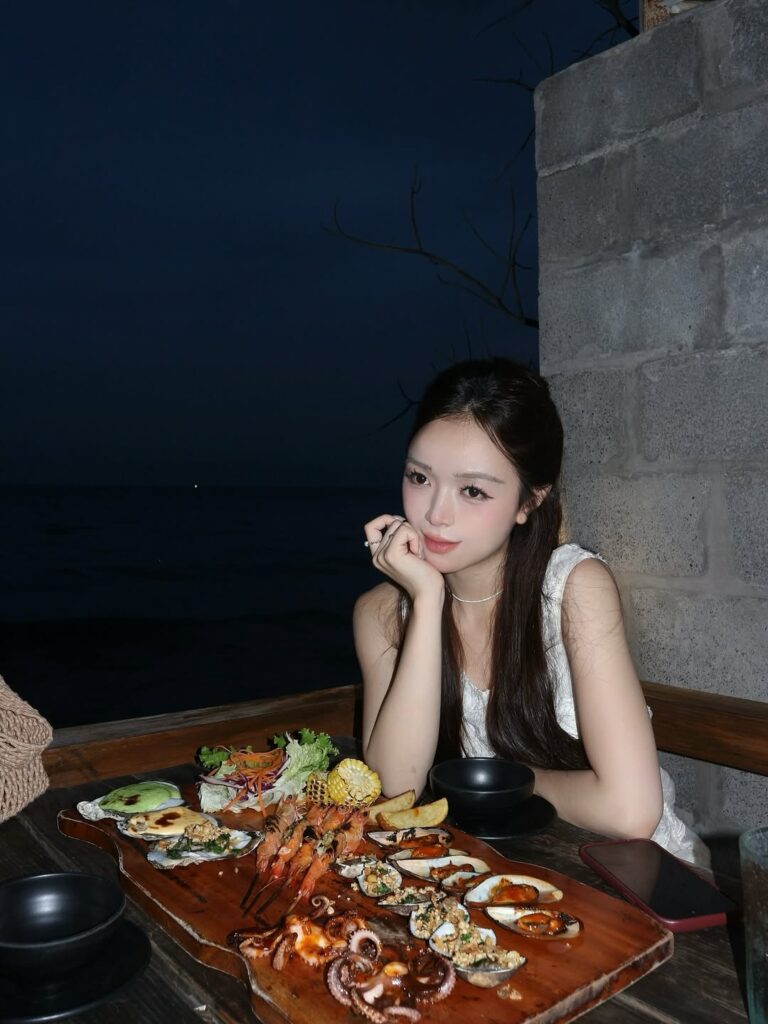Advertisements
Did you know that Vietnamese cuisine is one of the most photographed food styles on Instagram, with over 12 million posts tagged #vietnamesefood? I discovered this little gem of a stat when I was desperately trying to figure out why my pho photos looked like sad soup while everyone else’s seemed to glow with this magical, ethereal steam. Trust me, Vietnamese food photography isn’t just about pointing your camera at a bowl and clicking – it’s an art form that requires understanding both the cultural significance and visual storytelling of each dish.
My Journey Into Vietnamese Food Photography

Let me tell you about my first disaster. I was at this amazing little Vietnamese restaurant in my neighborhood, and I ordered this beautiful bowl of bun bo hue. The colors were incredible – deep red broth, fresh herbs, perfectly sliced beef. But when I took the photo, it looked like… well, like someone had dumped ingredients into murky water.
That’s when I realized Vietnamese food photography is all about capturing layers and textures. The mistake I made was shooting from directly above, which flattened all those gorgeous dimensional elements that make Vietnamese dishes so visually appealing. Vietnamese cuisine photography requires you to think in 3D, not just 2D.
Understanding Vietnamese Food Aesthetics
Vietnamese dishes are built on this incredible principle of balance – sweet, sour, salty, spicy, and umami all dancing together. When you’re doing food styling for Vietnamese cuisine, you need to showcase this harmony visually too. I learned this the hard way when I kept trying to make everything look “perfect” and organized.
Here’s what actually works: embrace the beautiful messiness! Vietnamese food is meant to look abundant and fresh. Those herbs scattered around the plate? That’s not sloppy – that’s authentic. The way the noodles peek out from under the broth in a bowl of pho? Pure poetry.
Essential Equipment for Vietnamese Food Photography
Okay, so you don’t need a million-dollar setup, but there are some game-changers I wish I’d known about earlier. First up – a good macro lens or smartphone with decent close-up capabilities. Vietnamese food is all about those intricate details: the delicate rice paper texture in fresh spring rolls, the way herbs glisten with moisture, the marbling in a perfectly cooked piece of pork.
Natural lighting is your best friend here. I used to struggle with harsh restaurant lighting until I started positioning myself near windows. The soft, diffused light brings out the vibrant colors that make Vietnamese cuisine so Instagram-worthy. And honestly? Sometimes I’ll even ask to move tables if the lighting is terrible – no shame in that game!
Composition Techniques That Actually Work
Here’s where I got really nerdy about it. Vietnamese food photography composition isn’t just about the rule of thirds (though that helps too). It’s about telling the story of how the food is meant to be eaten. Take banh mi, for example – showing it slightly unwrapped with some filling spilling out creates this irresistible “I need to eat this now” feeling.
Color theory plays a huge role too. Vietnamese dishes often feature this amazing contrast between deep, rich broths and bright, fresh garnishes. I learned to use props that complement these colors rather than compete with them. Think natural wood, white ceramics, and maybe some banana leaves if you can find them.
Common Mistakes I Made (So You Don’t Have To)
Oh boy, where do I even start? My biggest blunder was trying to photograph everything the same way. Vietnamese spring rolls need completely different treatment than a steaming bowl of pho. Spring rolls are all about showcasing the translucent wrapper and colorful ingredients inside – close-up, well-lit shots work best.
But pho? That’s all about the steam, the depth, the way the ingredients layer in the bowl. I used to get so frustrated trying to capture that perfect steam shot until I realized timing is everything. The steam only lasts for about 30 seconds after the bowl arrives, so you better be ready!
Cultural Sensitivity in Vietnamese Food Photography
This is super important, and I wish more food photographers talked about it. Vietnamese cuisine isn’t just pretty food – it carries deep cultural significance. When I photograph dishes like banh chung or che ba mau, I try to research the cultural context first. Understanding that certain dishes are tied to holidays, family traditions, or regional pride helps me approach the photography with more respect.
I also learned to be mindful about props and styling. Using chopsticks as mere decoration when they’re meant to be functional eating utensils? Not cool. The food photography community has been having important conversations about cultural appropriation, and honestly, it’s made me a more thoughtful photographer.
Ready to Master Vietnamese Food Photography?
The beauty of Vietnamese food photography lies in its authenticity – the controlled chaos of fresh herbs, the rich complexity of broths, and the vibrant colors that tell stories of tradition and family. Remember, every bowl of pho or plate of banh mi has a story behind it, and your job as a photographer is to honor that story while making people’s mouths water.
Don’t be afraid to experiment with different angles and lighting, but always keep that cultural respect at the forefront. Vietnamese cuisine deserves to be photographed with the same care and reverence that goes into preparing it. Want to dive deeper into food photography techniques and cultural considerations? Check out more insights and tips on Linkcheese – I’m always sharing my latest photography adventures and the lessons learned along the way!



Pingback: This Is Vietnam’s Mobile Food Guides Secret - LinkCheese